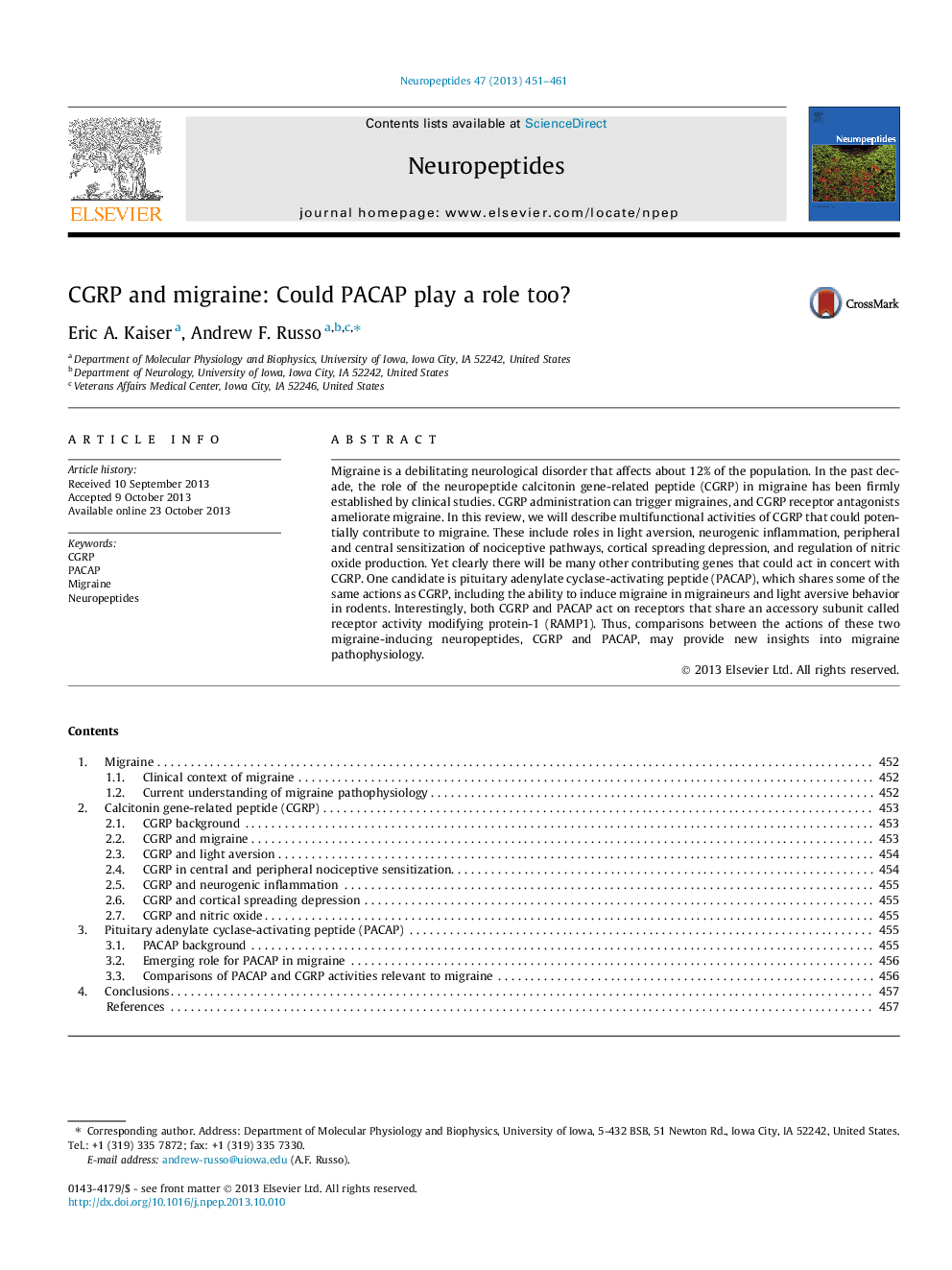| Article ID | Journal | Published Year | Pages | File Type |
|---|---|---|---|---|
| 2808184 | Neuropeptides | 2013 | 11 Pages |
Migraine is a debilitating neurological disorder that affects about 12% of the population. In the past decade, the role of the neuropeptide calcitonin gene-related peptide (CGRP) in migraine has been firmly established by clinical studies. CGRP administration can trigger migraines, and CGRP receptor antagonists ameliorate migraine. In this review, we will describe multifunctional activities of CGRP that could potentially contribute to migraine. These include roles in light aversion, neurogenic inflammation, peripheral and central sensitization of nociceptive pathways, cortical spreading depression, and regulation of nitric oxide production. Yet clearly there will be many other contributing genes that could act in concert with CGRP. One candidate is pituitary adenylate cyclase-activating peptide (PACAP), which shares some of the same actions as CGRP, including the ability to induce migraine in migraineurs and light aversive behavior in rodents. Interestingly, both CGRP and PACAP act on receptors that share an accessory subunit called receptor activity modifying protein-1 (RAMP1). Thus, comparisons between the actions of these two migraine-inducing neuropeptides, CGRP and PACAP, may provide new insights into migraine pathophysiology.
